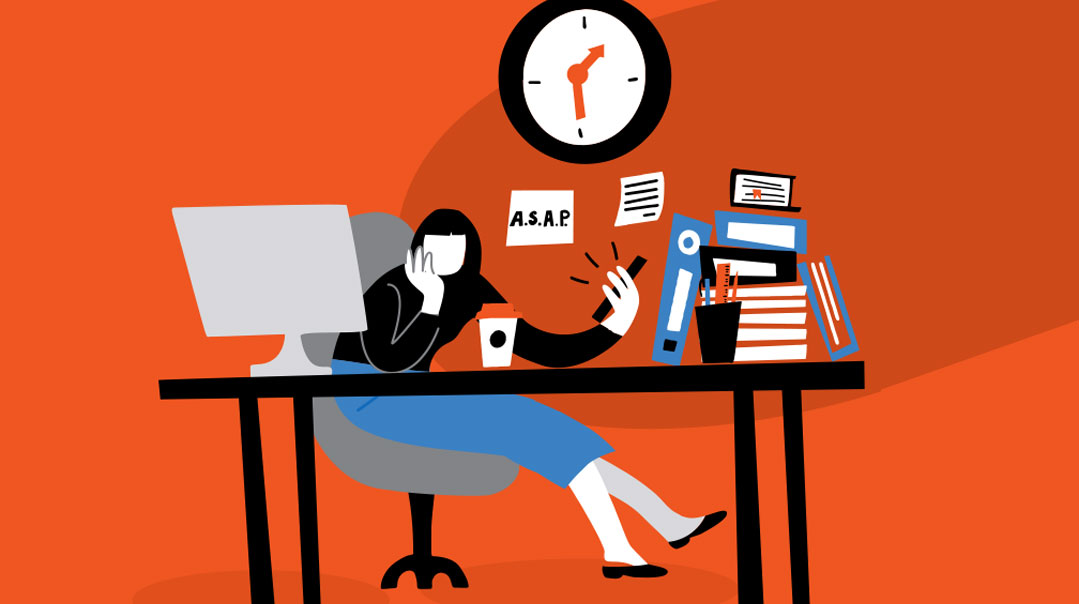Back in Control


For years I had back and knee pain. I tried just about every treatment: chiropractic physiotherapy acupuncture reflexology kinesiology bioresonance therapy magnets you name it. Sometimes when my back and knees felt okay my ankles hurt. Or my wrists. There always seemed to be aches and pains somewhere in my body.
Two years ago my knee problems escalated to the point where I required knee braces. Physiotherapy and leg-strengthening exercises seemed to help and the pain began to wane. But the respite was brief — before long my back started acting up. The pain grew so severe that I could barely walk. That’s when someone introduced me to the book Healing Back Pain: The Mind-Body Connection by Dr. John E. Sarno (Grand Central Publishing).
Dr. Sarno asserts that at the root of physical pain is emotional pain. The cure then isn’t drugs surgery or other body-based remedies but rather techniques that release anger stress and other negative feelings.
Within a few weeks of practicing the strategies in the book my back and knee pain were gone and I ditched the knee braces. Within six months my ankle braces orthotics compression socks and orthopedic pillow followed. I no longer have to sit “just so ” and I play basketball three or four times a week. Best of all I no longer live in fear of the pain.
The Mind-Body Connection
Would you rather deal with a broken arm or a broken heart? A blow to your shoulder or to your self-esteem? What’s worse — physical or emotional pain? Most people agree that emotional tribulations are harder to deal with. It should come as no surprise, then, that our highly intelligent brains are skilled at deflecting emotional pain with physical pain.
Though Western medicine has been slow to accept the influence of emotions over physical well-being, a growing body of research has been making inroads in legitimizing psychosomatic (mind-body) medicine. Consider these facts, culled from studies published in respected medical journals:
- High amounts of belly fat are linked to perceived racism and stress.
- Over time, stress hormones cause memory loss and dementia.
- Among volunteers injected with the common cold virus, those who perceived high levels of stress were more likely to get sick.
- Among a study of medical students, mortality rates were higher among those who rated high in hostility than those who smoked, were overweight, had high blood pressure, or didn’t exercise.
Here’s another shocking fact: There is no proof that spinal abnormalities cause pain. Study after study has revealed that a significant percentage of the population shows some form of spinal abnormality as seen on an MRI, such as a herniated disc, but experiences no pain.
Conventional medicine claims that pain is physiological — that something, somewhere, is “wrong” with your body. While it’s generally accepted that stress can exacerbate physical pain, it’s not widely believed that it can create it. Dr. Sarno challenges these beliefs, blaming tension myositis syndrome (also known as Tension Myoneural Syndrome), or TMS, for almost all pain syndromes. As Dr. Sarno puts it, “Traditional medical diagnoses focus on the machine, the body, while the real problem seems to relate to what makes the machine work, the mind.”
A graduate of Columbia University College of Physicians and Surgeons, Dr. Sarno is board certified in physical medicine and rehabilitation. He is a professor of rehabilitation medicine at the NYU School of Medicine and director of the outpatient department at the Rusk Institute of Rehabilitation Medicine. In his first few years practicing medicine, he saw many patients diagnosed with spine abnormalities, such as arthritis, disc disorders, and muscular conditions. They were being treated with the standard treatments — ultrasound, massage, exercise, surgery — yet the results were inconsistent.
Dr. Sarno also discovered that symptoms were often not directly attributable to the presumed injured area. For instance, a disc herniated to the left should cause pain only down the left side of the body. But in some cases (like mine), it also causes pain on the right side. Anatomically, this doesn’t make any sense.
After observing thousands of patients, Dr. Sarno calculated that 88 percent of them had histories of other syndromes as well, such as migraines, ulcers, irritable bowel syndrome, etc. Since these syndromes are likely related to tension, he concluded that back pain was also related to tension. “Myo” means muscle; hence Dr. Sarno coined the term tension myositis syndrome.
The pain of TMS is very real; it’s not “in your head.” TMS is a physical disorder, but with an emotional cause. Tension causes restricted blood flow in a given area, resulting in decreased oxygen delivered to that area. This mild oxygen deprivation can affect muscles, tendons, ligaments, or nerves, causing weakness, pins and needles, or pain ranging from mild annoyance to complete disability.
Most commonly, an acute TMS attack strikes the back. The pain can be so excruciating that breathing is painful, and a sneeze can make one pass out. Often, the patient hears a cracking or popping sound, similar to a chiropractic adjustment. The fear of the pain returning can become all-consuming; in fact, the fear is usually even more debilitating than the pain.
Since attacks generally recur, the fear grows, there’s more diagnostic testing, and more “problems” are found. A herniated disc here, arthritis there. This causes more fear, which triggers more pain — it’s a vicious cycle.
The Perfect Diversion
In Dr. Sarno’s books (Healing Back Pain was followed by The Divided Mind: The Epidemic of Mind-Body Disorders), he pushes readers to rethink their preconceived notions of pain. For instance, have you ever wondered how a ten-year-old injury can possibly cause physical discomfort when you’re reaching for a book on a high shelf? Or let’s say you have aches and pains because you spend all day sitting at a desk. You’ll probably be advised to “be careful” about how you position yourself while sitting. Now ask yourself: How can a simple action such as sitting be so hazardous to your health? According to Dr. Sarno, this is all conditioning — normal activities do not cause pain.
So why, then, might we feel tingling, numbness, and other painful sensations after being at our desks all day? Dr. Sarno answers the question by pointing out that pain has an amazing ability to divert a person’s attention. With his every thought “safely” focused on his body, a person can avoid facing undesirable emotions.
Often, these emotions are rooted in trauma, but they can also stem from everyday stress at work or home. Back pain, migraines, even conditions like eczema — Dr. Sarno says that these all cause one to focus on the body rather than the mind, to focus on physical rather than emotional pain. The more frightening and disabling the symptoms, the better the diversion.
In order for these diversionary tactics to be successful, however, the person must remain unaware of what’s going on inside. Once he realizes that the cause of his pain is actually emotional rather than physical, the defense mechanism loses its power.
And therein lies the cure. If a person can rule out a real medical issue (i.e. cancer), he can heal himself with knowledge. Moreover, a person doesn’t actually have to resolve the source of the problem; sometimes, just the awareness can be enough.
This was the case with Jason. As a teenage athlete, he experienced occasional back pain, which a few visits to the chiropractor cleared up. When he hit his 30s, Jason’s back started hurting constantly, but his chiropractor could only provide temporary relief. He couldn’t lie down, sleep, or bend; pain was taking over his life. He tried acupuncture, which also helped — temporarily. His doctor prescribed painkillers, but they only dulled the pain.
Six difficult months later, Jason visited a spinal clinic. X-rays revealed a slight vertebral fracture. He received spinal injections, which were supposed to make the pain go away. It did — for a few days. The doctor wouldn’t prescribe more painkillers, leaving surgery the only option left.
A friend suggested he read Dr. Sarno’s Healing Back Pain. Jason laughed. “I have a fractured vertebra! I need surgery, not a book!” A few days later, his son’s pediatrician recommended Healing Back Pain.
This time, Jason didn’t laugh. “I Googled the book. I read all 383 reviews and was blown away. I thought it was some kind of cult; but people were getting better.” Wary, Jason asked his rabbi if the whole Sarno thing was “kosher.” The rabbi endorsed the book, so Jason bought a copy — and was thrown into a whirlwind. He saw himself on every page: His first child had recently been born, and he was in the process of switching jobs, and selling his house. All of a sudden, just from reading the book, the pain started to fade. “I thought I was going insane,” Jason says.
Jason saw a TMS practitioner who viewed the MRI and X-rays and did some nerve and muscle testing. After an hour-long examination he said, “If you take 1,000 people off the street, half probably have this problem. It’s normal wear and tear. There’s nothing wrong with you.”
Jason agreed to spend five minutes a day writing down stressors in a workbook. Within a month, his pain was gone. “When I read the book, 80 percent of my pain went away. That last 20 percent was the hardest, because I had to do some work inside,” says Jason.
Once a person is convinced that the cause of his pain is repressed feelings and not physiological, TMS loses its power to attract the attention of the conscious mind. Its cover is blown. For this to work, you have to both understand the process and accept it.
Recovery from a bout of TMS generally takes two to six weeks. If the pain does not subside, or if it keeps recurring (or moving around, a process Dr. Sarno calls the symptom imperative), psychotherapy may be necessary.
Sometimes, it’s simply a matter of reminding yourself of what you already know. When my back recently had a major flare-up, I knew it was time to reread Dr. Sarno’s books. Though “officially” I had a herniated disc, I was confident that the cure was within me. After a few weeks, I was back to playing basketball. No surgery, physical therapy, or painkillers necessary.
The Little Man
Ruth (Ruthie) Krausz, RN, CTACC, is a registered nurse and certified life coach living in Denver, CO. She suffered for over 20 years from neck and shoulder pain, trying chiropractic, acupuncture, massage, and many other therapies, most of which brought her temporary relief. Desperate, she visited Dr. Sarno in person. The experience was life-changing. Once free of pain, she decided to use her credentials and experience to help others. She’s currently doing Body Pain Management Education and Coaching, using Dr. Sarno’s methods.
To help her clients, Ruthie created a metaphor to explain why their pain exists, and how to get rid of it: In the basement of the unconscious mind, there’s a Little Man surrounded by boxes that are filled with a person’s anger. The accumulation of all these boxes is rage. The Little Man’s job is to distract us from these emotions by sending the brain a message to siphon off oxygen from a site in the body. The pain that’s caused by this mild oxygen deprivation is real and very debilitating, and it successfully distracts us from our emotions.
Our job is to render this strategy ineffective. To do that, we have to convince the Little Man that we’re aware of what’s in each and every box — aware of our emotions — and don’t need to be distracted from them. One strategy requires talking “directly” to the Little Man. “You have to sit down twice a day for 10 to 15 minutes and verbalize all your anger to him, until he gets the message that you’re aware of all the emotions he’s trying to distract you from, and he no longer has the job of causing you pain,” Ruthie explains.
Another visualization Ruthie created goes like this: “Place your hand at the back of your head, at the base of your skull; that’s the basement. Place your other hand on your forehead; that’s the conscious mind. We must build a staircase between the two so we can unload the boxes from the basement, bringing them upstairs to consciousness.”
Visualizing and “talking to” a little man may sound far-fetched or childish, but Ruthie has found it useful for many of her clients, especially those who have trouble admitting that they’re angry. The metaphor helps people realize that they’re not displaying bad middos — they are not expressing anger in inappropriate ways — it’s simply a part of their unconscious.
What makes up this reservoir of anger in our unconscious minds? In addition to childhood traumas and day-to-day stresses, self-imposed pressures make up a good 50 percent of the reservoir of emotions in the unconscious. It’s crucial to release them with statements such as, “I’m angry I’m such a perfectionist” or “I’m enraged that I’m such a people pleaser.”
We don’t have to change our personalities. The knowledge that there’s nothing physically wrong with you is enough. Once the Little Man knows we’ve seen right through him, we watch him pack up and walk away, taking the pain with him.
Like Dr. Sarno, Ruthie emphasizes the importance of checking out pain and other maladies with a doctor before relying on a TMS diagnosis and using the above method.
But Can You Prove It?
Not everyone buys into the TMS theory. The medical community at large basically ignores Dr. Sarno. Though there are no studies proving him wrong and no prominent doctors calling him dangerous, the vast majority of physicians remain wary of the mind-body connection, if for no other reason than it’s not clinically proven. The placebo effect is often cited as a reason for the treatment’s success, as well as regression to the mean (a statistical phenomenon in which spikes in measured data tend to be followed by more average readings; these natural variations can create the appearance of change where it doesn’t actually exist).
Some detractors point to blatant disregard of studies that identify specific organic (physical) links to certain syndromes (such as chronic fatigue syndrome). A number of disgruntled bloggers claim that Dr. Sarno is out of his league, sounding more like a psychiatrist than an MD, and that he makes too many broad generalizations. Long-time sufferers of hard-to-treat syndromes such as fibromyalgia and migraines feel he’s putting them down, minimizing their pain. One skeptic referred to Dr. Sarno as “just another AITH [all in the head] guru.”
Others say that Dr. Sarno’s methods only work on certain types of people, such as people pleasers or trauma survivors. There’s also some concern that people with actual, physical diseases will refrain from getting medical help, or will engage in activities that cause further damage. Addressing this last point, Dr. Sarno claims that in all his years treating TMS, he’s never had a single report of harm caused by resuming normal activities.
Will Dr. Sarno’s methods work for you? You’ll only know by giving them a try, bearing in mind that reading the book is not enough — you have to accept that his methods works. Once you’ve sought medical advice to rule out serious disorders (e.g. infections), Dr. Sarno insists that patients stop all physical treatments because even if they’re helping (due to the placebo effect, or increased blood flow and thus oxygen), they perpetuate the illusion that the cause is physical.
As Dr. Sarno says, “You have a secret weapon — your brain. It may be the instrument of your physical symptoms, but it’s also the means by which those symptoms can be abolished.”
DOES PAIN FOLLOW FASHION TRENDS?
If Tension Myositis Syndrome is caused by repressed emotions, how does the brain “decide” where the pain will manifest? Why does one person suffer backaches, while another has irritable bowel syndrome?
Medical historian Edward Shorter suggests that cultural factors may play a role. Psychosomatic symptoms change with the times; whether consciously or unconsciously, the population exhibits symptoms that are treatable, currently in vogue, and covered by insurance. For instance, a 1996 study revealed that in Norway, where insurance covered treatment, there was a high percentage of whiplash cases following rear-end collisions; but in Lithuania, where insurance did not cover treatment, the whiplash syndrome was nonexistent.
This explains the explosion of conditions such as fibromyalgia (FM) and carpal tunnel syndrome (CTS). FM has no known cause but has been linked in studies to emotional pain — post traumatic stress syndrome, stress, illness, or trauma. CTS dramatically increased with widespread computer use — along with its attribution to structural problems in the body, such as a pinched nerve. Dr. Sarno observes that CTS was uncommon among typists before it came into fashion.
Ruth Krausz, RN, CTACC does Body Pain Management Education and Coaching using Dr. Sarno’s methods. She can be contacted via Mishpacha.
Oops! We could not locate your form.












